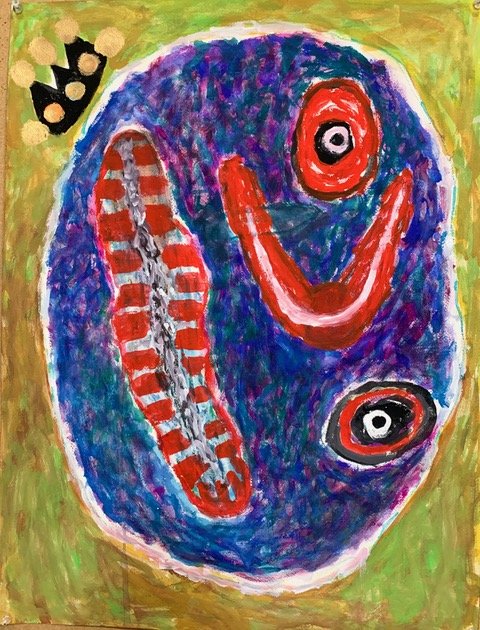Recently, I attended The Outsider Art Fair in New York. It was packed with wonderful artwork, curious people browsing the booths, and some serious collectors.
For personal reasons, the show was illuminating. I have been called an “outsider artist,” so I was curious to see the work of artists similarly labeled. Frankly, I didn’t see much resemblance.
True, I never received a formal art training. Instead, I spent almost fifteen years working totally alone, isolated from other artists, trying to find my way. The friends I had were uninterested in art, and I was too busy earning a living, 9 to 5 plus, to befriend other artists. My process was trial-and-error. Despite the frustration and frequent failures, I did not give up. I had something to say, and that need drove me onward.
From the onset I grounded myself in the vocabulary of Western and non-Western art. I taught myself by drawing in museums and studying art books. I spent years working from live models. I even stopped using color to better concentrate on composition. I had no idea what I was doing, but I doggedly kept doing it on weekends and evenings after work.
After many years of experimentation, I discovered my style. I realized that my artwork should reflect my Brooklyn working class roots, not classical European art. I must paint like the kid from East New York that I was, not like The School of Paris. I gave up perspective. I flattened out my compositions. Suddenly, the struggle to make artwork became easier, or should I say more natural?
Another important realization came in the 1970’s while attending a New School class on Primitive Art with Edmund Carpenter, a well-known anthropologist. Carpenter spoke about the magical origins of early cave art, and how over millennia certain forms migrated across the world (he authored a 15-volume work on the subject). Carpenter’s class clarified what I already sensed: that I wished to root my artwork in existential questions. By loosely allying my work to the earliest art, I hoped it might better endure the test of time.
That is when I started to define my art as “High and Low.” I use “low” unsophisticated, primitive techniques to portray “high” philosophical and social quandaries. In this way I am simultaneously an art Insider and Outsider.
This duality differentiates me from many outsider artists. Outsider art is non-traditional, with little or no fine art exposure at all. The art is deeply personal. In a world of their own, they create a unique and often remarkable world out of their imagination.
Outsider Artists are often compelled by powerful inner forces. This can give outsider art the power of individuality and uniqueness. Sometimes shocking or surprising, Outsider Art has become an inspiration for artists who believe art should not conform with the traditional concepts of beauty. Dubuffet comes to mind.
Some may consider my artwork eccentric. It may be odd—after all “I did it my way”— but that, alone, doesn’t make me an Outsider Artist. Personally, as a consequence of my study of fine art, I think of my artwork as falling into the “classical” category.
I am always careful to avoid an extreme individuality. An extreme subjectivity may lead to eccentricity, and to an art that speaks only to itself. This circular quality can confound or bewilder the viewer. Paintings of personal religious visions sometimes have this affect on me. I am not moved or entranced by someone else’s revelation. It is too personal. The spiritual references don’t relate to my life experience. On the other hand, the art of Rothko or Matisse offer a sense of the spiritual.
As I left the art fair, I had a vague feeling of dissatisfaction.
I felt great admiration for the determination and perseverance of the outsider artists, but I also sensed their loneliness. Unknown, unconcerned with an audience, prey to a multiplicity of inexplicable thoughts, doubts and impulses, they struggle to find a personal vocabulary.
One of the highlights of the fair were the many works by James Castle, one the best known and most isolated outsider artists. Deaf and mute, Castle lived on a farm, cut off from society, with his financially-strapped extended family. Unemployable, he spent all his time making art. Short of money, Castle used whatever materials were on hand. He mixed soot with saliva, and extracted colors from comic book illustrations. His work is a monument to the power of human creativity, an inspiration, and one good reason to attend the fair.
Am I or Am I Not? I remain inside and outside the world of Outsider Art. My work continues.

